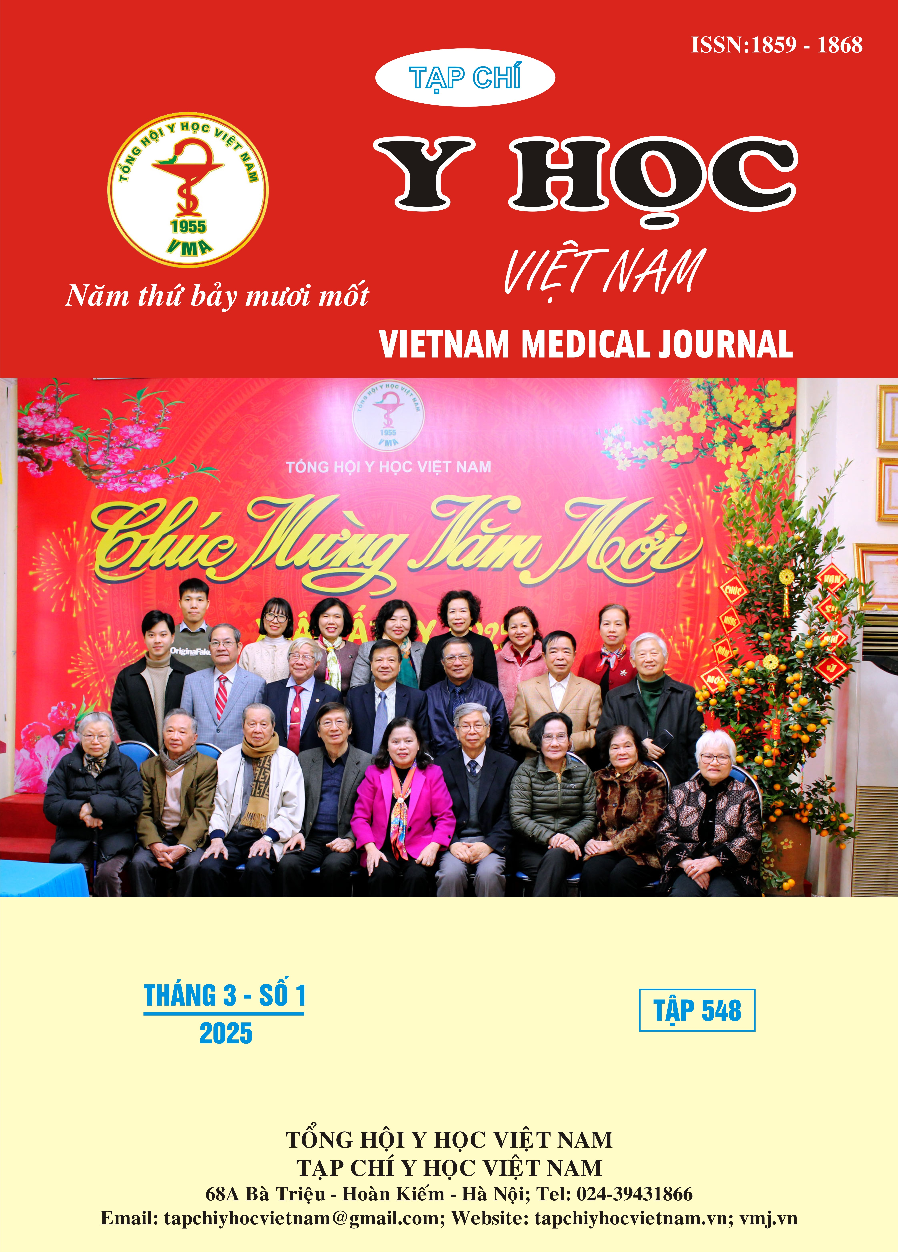PTERYGOMAXILLARY SUTURE MORPHOLOGY IN EDENTULOUS MAXILLA PATIENTS
Main Article Content
Abstract
Objectives: To evaluate the morphological characteristics of the pterygomaxillary suture in edentulous Vietnamese patients using CBCT imaging. Materials and methods: A cross-sectional descriptive study was conducted on 60 CBCT scans of edentulous maxillary patients, collected from the Faculty of Odonto-Stomatology, University of Medicine and Pharmacy at Ho Chi Minh City, and Van Hanh General Hospital. The analyzed parameters included the height of the pterygomaxillary suture, the distance from the maxillary tuberosity to the base of the pterygopalatine fossa, and the suture width at three levels (low, middle, high). Results: The mean height of the pterygomaxillary suture was 13.56 ± 2.44 mm in males and 12.97 ± 2.65 mm in females, with no significant difference between sides. The distance from the maxillary tuberosity to the base of the pterygopalatine fossa was 18.44 ± 2.73 mm in males and 19.27 ± 2.78 mm in females. The width of the pterygomaxillary suture decreased with height, with the largest width at the low level (8.18 ± 1.52 mm in males, 7.18 ± 1.46 mm in females) and the smallest at the high level (5.68 ± 1.38 mm in males, 5.29 ± 1.34 mm in females). Conclusion: The pterygomaxillary suture provides sufficient volume for pterygoid implant placement. The suture at the low level is wider than at the middle and high levels. CBCT assessment should be conducted for each patient to determine an appropriate surgical strategy.
Article Details
References
2. Apinhasmit W, Methathrathip D, Ploytubtim S, Chompoopong S, Ariyawatkul T, Lertsirithong A. Anatomical study of the maxillary artery at the pterygomaxillary fissure in a Thai population: its relationship to maxillary osteotomy. J Med Assoc Thai. Oct 2004; 87(10):1212-7.
3. Araujo RZ, Santiago Júnior JF, Cardoso CL, Benites Condezo AF, Moreira Júnior R, Curi MM. Clinical outcomes of pterygoid implants: Systematic review and meta-analysis. J Craniomaxillofac Surg. Apr 2019;47(4):651-660. doi:10.1016/j.jcms.2019.01.030
4. Cheung LK, Fung SC, Li T, Samman N. Posterior maxillary anatomy: implications for Le Fort I osteotomy. Int J Oral Maxillofac Surg. Oct 1998; 27(5):346-51. doi:10.1016/s0901-5027(98)80062-3
5. Kim D-Y, Cho Y-C, Sung I-Y, et al. Anatomic Study of Pterygomaxillary Junctions in Koreans. Maxillofacial plastic and reconstructive surgery. 2013;35:368-375.
6. Salinas-Goodier C, Rojo R, Murillo-González J, Prados-Frutos JC. Three-dimensional descriptive study of the pterygomaxillary region related to pterygoid implants: A retrospective study. Sci Rep. Nov 7 2019;9(1):16179. doi:10.1038/s41598-019-52672-x
7. Tunis TS, Dratler S, Kats L, Allon DM. Characterization of Pterygomaxillary Suture Morphology: A CBCT Study. Applied Sciences. 2023; 13(6):3825.
8. Uchida Y, Yamashita Y, Danjo A, Shibata K, Kuraoka A. Computed tomography and anatomical measurements of critical sites for endosseous implants in the pterygomaxillary region: a cadaveric study. Int J Oral Maxillofac Surg. Jun 2017;46(6):798-804. doi:10.1016/ j.ijom.2017.02.003


